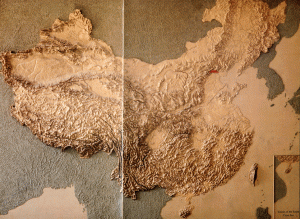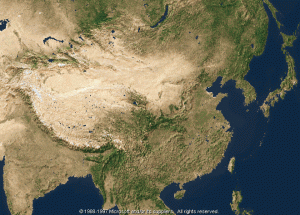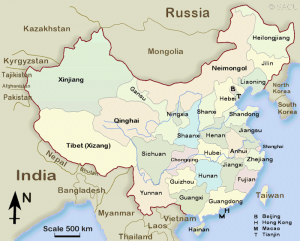Orientation
I. Why history?
- History as a discipline
- History as exploration
II. The “life-cycle” of thinking about the past
- Question
- Sources
- Contexts
- Interpretation
- Hypothesis
- Narrative
- Argument
- More questions
III. Why China?
- The pragmatist’s argument
- The humanist’s argument
IV. By the end of the course, students should be able to . . .
- offer historically-informed analyses on the unity and diversity, changes and continuities, of Chinese society prior to its modern transformations;
- articulate some of the characteristics of the nature and impacts of the interactions between China and the wider world;
- work with confidence with a range of primary historical sources;
- elevate their abilities to evaluate the strengths and weaknesses of historical claims.
V. Course elements
- Canvas/Blog
- Quizzes/Discussion Posts
- Readings (primary/secondary)
- Reflection Essays
- Book Review
- Final Take-home Exercise
- Research Project (optional)
- Office hours
VI. Approaches to Chinese History
- Dynastic cycles
- Early European perspectives (e.g., Hegel [1770–1831])
- Universal history
- Change within tradition
- China in the World
- Global history / Big history
Early China
I. Lands and Peoples
- Environment and History
- Physical Geography (river systems: Yellow, Yangzi, Pearl)
- Human Geography
II. Periodization
- Ancient “China”—Xia (ca. 2200–1700 BCE) . . . Shang (ca. 1700–1100 BCE) . . . Zhou (ca. 1100–221 BCE)
- The First Empire—Qin (221–207 BCE) . . . Han (207 BCE–220 CE)
- Period of Disunion (220–589)
- The Second Empire—Sui (589–618) . . . Tang (618–907)
III. Major Themes
- Continuity and change
- Unity and diversity
- Structure and agency
- Boundaries and Identities
Discussion
- What is the difference between a primary and a secondary source?
- What is one common image/conventional wisdom about China (or its past) you are particularly dubious about?
- What would you like to learn from this course?
Maps
External links to Maps:
Boundaries | Comparisons | China's Geography
Physical Map
Source: National Museum of Chinese History, ed., A Journey into China's Antiquity, vol. 1 (Beijing: Morning Glory Publishers, 1997), pp. 8–9.
Physical Map by Satellite
Administrative Map
Source: SACU
Images
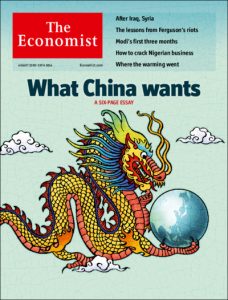
The Economist: What China Wants |

Map of China: Languages |
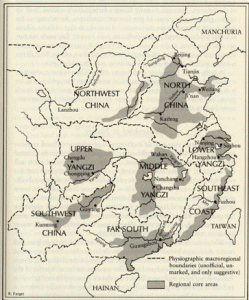
Map of China: Regions |

Han/non-Han |
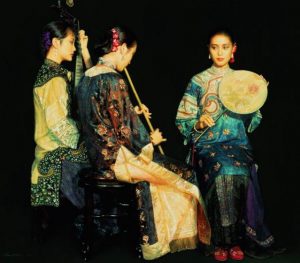
"Lingering Melodies from the Xunyang River" |
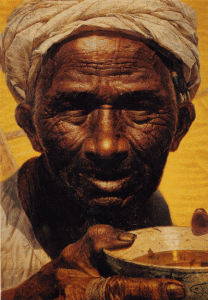
"Father" |
References
- Marks, Robert B. China: Its Environment and History. Lanham, Md.: Rowman & Littlefield, 2012.
- Spence, Jonathan D. The Chan's Great Continent: China in Western Minds. New York: W. W. Norton, 1998.
- Tu, Wei-ming. The Living Tree: The Changing Meaning of Being Chinese Today. Stanford: Stanford University Press, 1991.
- Waley-Cohen, Joanna. The Sextants of Beijing: Global Currents in Chinese History. New York: W. W. Norton, 1999.

